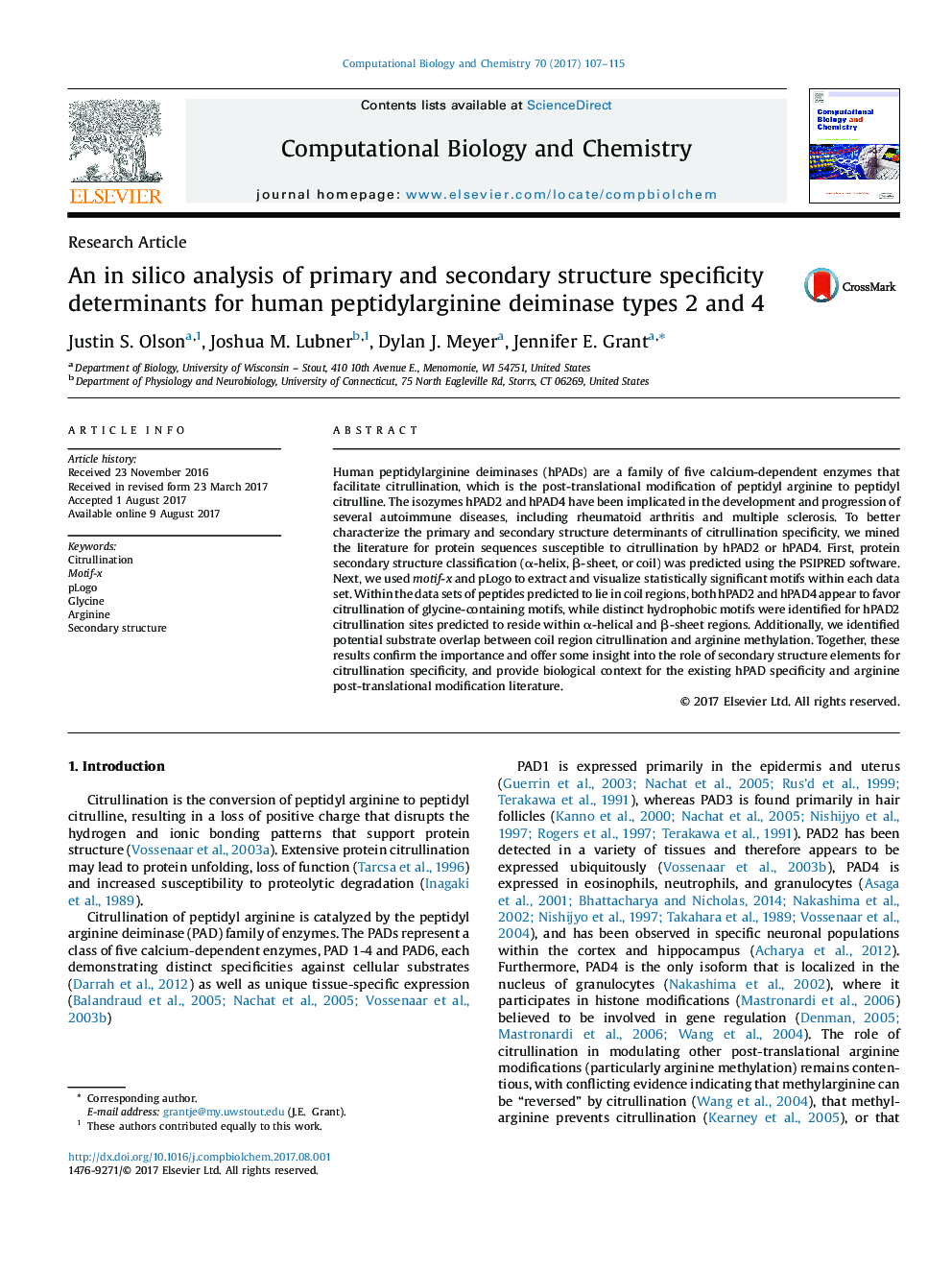| Article ID | Journal | Published Year | Pages | File Type |
|---|---|---|---|---|
| 4752591 | Computational Biology and Chemistry | 2017 | 9 Pages |
â¢In silico analysis of hPAD primary and secondary structure specificity determinants.â¢Distinct specificity motifs exist in α-helix, β-sheet, and coil regions.â¢hPAD2 and hPAD4 favor glycine-containing motifs in coil structure regions.â¢hPAD2 recognizes hydrophobic motifs in α-helix and β-sheet structure regions.â¢hPAD coil motifs share substrate specificity overlap with arginine methylation.
Human peptidylarginine deiminases (hPADs) are a family of five calcium-dependent enzymes that facilitate citrullination, which is the post-translational modification of peptidyl arginine to peptidyl citrulline. The isozymes hPAD2 and hPAD4 have been implicated in the development and progression of several autoimmune diseases, including rheumatoid arthritis and multiple sclerosis. To better characterize the primary and secondary structure determinants of citrullination specificity, we mined the literature for protein sequences susceptible to citrullination by hPAD2 or hPAD4. First, protein secondary structure classification (α-helix, β-sheet, or coil) was predicted using the PSIPRED software. Next, we used motif-x and pLogo to extract and visualize statistically significant motifs within each data set. Within the data sets of peptides predicted to lie in coil regions, both hPAD2 and hPAD4 appear to favor citrullination of glycine-containing motifs, while distinct hydrophobic motifs were identified for hPAD2 citrullination sites predicted to reside within α-helical and β-sheet regions. Additionally, we identified potential substrate overlap between coil region citrullination and arginine methylation. Together, these results confirm the importance and offer some insight into the role of secondary structure elements for citrullination specificity, and provide biological context for the existing hPAD specificity and arginine post-translational modification literature.
Graphical abstractDownload high-res image (125KB)Download full-size image
